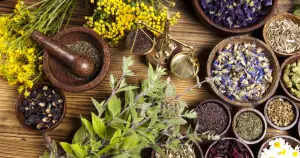Essential oils are versatile. You may have seen bottles of these precious oils at health food stores or online and wondered, “How exactly would I go about benefiting from these oils?” Understanding them and how to use essential oils can at first seem quite overwhelming.
But once you understand some of the basics – whether it be topical application, aromatherapy, etc. – I think you will find them easy to use and find yourself incorporating them into your everyday life. Essential oils have been used historically for medicinal and health purposes, food preparation, and beauty rituals. And most of these uses are still administered to this day.
You may choose to use single oils to target specific symptoms or special oil blends. Just to name a few, you can apply essential oils to your:
- Face
- Feet
- Hair
- Neck
If you’re feeling really ambitious, you can even apply essential oils to your dog, cat, or other pets! The possibilities are vast. So without further delay, let’s get you started with this useful how to use essential oils guide!
[amazon box=”B06XRLR9RQ”]
Different Oils For the Best Applications
First, it is important to understand that not all oils work the same way. When you first get acquainted with a new oil, you will want to find out a little about the personality of the oil. You want to use them properly to fully reap the benefits! Oils can be used topically, internally, or aromatically. Not all oils can be used in the same ways. So you can always refer to the essential oils 101 guide to find out how the oil is to be used.
How to Apply Essential Oils Topically
Many oils can be applied topically to areas of the body. Not all oils can be applied “neat” or directly, however. Some oils need what is called a “carrier oil,” which dilutes this pure, all natural product. Remember, oils are very potent.
For that reason just a mere 2-3 drops can be effective. Some popular carrier oils include: fractionated coconut oil, hemp seed oil, grapeseed oil, and sweet almond oil. Products that require a carrier oil can be combined in a roller bottle for easy application. While some require a carrier oil for use, some may be applied “neat” to the body.
Good spots to dab oil are on the neck just below the ears or at the base of the throat. Feet are another good place where pores are larger and absorption happens more easily. Essential oils enter the bloodstream through your skin pretty quickly.
Some examples include:
- A foot soak with melaleuca and oregano for foot fungus
- Lavender oil applied to neck and chest before bed to help induce a restful sleep
- Frankincense (which possesses antibiotic properties) applied to a wound
Using Essential Oils Aromatically
Diffusing oils in the air is another popular way to enjoy the benefits of them. Experiencing essential oils aromatically is another great way to treat your physical or emotional conditions. It can also be a great preventative measure.
Oils used aromatically are generally administered using a diffuser. Choose a diffuser that works best for your lifestyle. My personal favorite is an ionic diffuser. Various single oils and blends help detoxify the air, eliminate bad odors, or protect against airborne pathogens. Using a diffuser can alter the mood in a room and provide a calming environment or provide a pick-me-up when you need one. You can customize your aromatic experience based on your needs.
[amazon box=”B01M1A5RRT”]
Some examples include:

- The Protective Blend blend in an ionic diffuser in your home to help ward off seasonal bugs
- Grounding blend in an ionic diffuser at your workplace to increase focus and precision to detail
- Breathe blend in an ionic diffuser at home or work for respiratory symptoms such as congestion
Feel Free to Apply Internally, Also!
Some essential oils can be used internally. Oils can be taken orally either diluted in water or other beverages — or even in veggie caps. Veggie caps are empty pill capsules you can add drops of essential oils to. These are swallowed like pills. Like other methods, ingested oils can be used to treat a variety of symptoms as well as used to aid digestive and dietary health. To really brighten up a food dish, you can add essential oils for an extra potency factor.
Some examples include:
- Make capsules of – Melaleuca and oregano to fight the flu
- Make capsules of – Francinsence, balsam fir, and copaiba to treat migraine pain
- Cilantro oil and lime oil can be added to salsa for an extra kick
Household Recipes For Essential Oils
You may have seen various recipes online for household cleaning recipes. Essential oils can add a pleasant scent to homemade soaps, lotions, or detergents. They also work well for sanitizing purposes. Many oils have antiviral and antibacterial properties. Essential oils allow you to clean and sanitize your household naturally and avoid harsh and dangerous chemicals!
Some examples include:
- Adding a few drops of your favorite essential oil to homemade hand soap
- Use lemon or lime in homemade carpet powder
- Add On Guard blend to homemade air freshener
[amazon box=”B00SA5UWW8″]
There are countless recipes to be found online and they are so easy! Once you begin customizing your household products, you won’t want to ever go back to store-bought!



Nearly all oils say not to ingest but there are some that are safe. Without an official grading system it comes down to a trusted manufacturer. Do you have ones that you know process their oils as they claim they do and are food or home remedy safe?